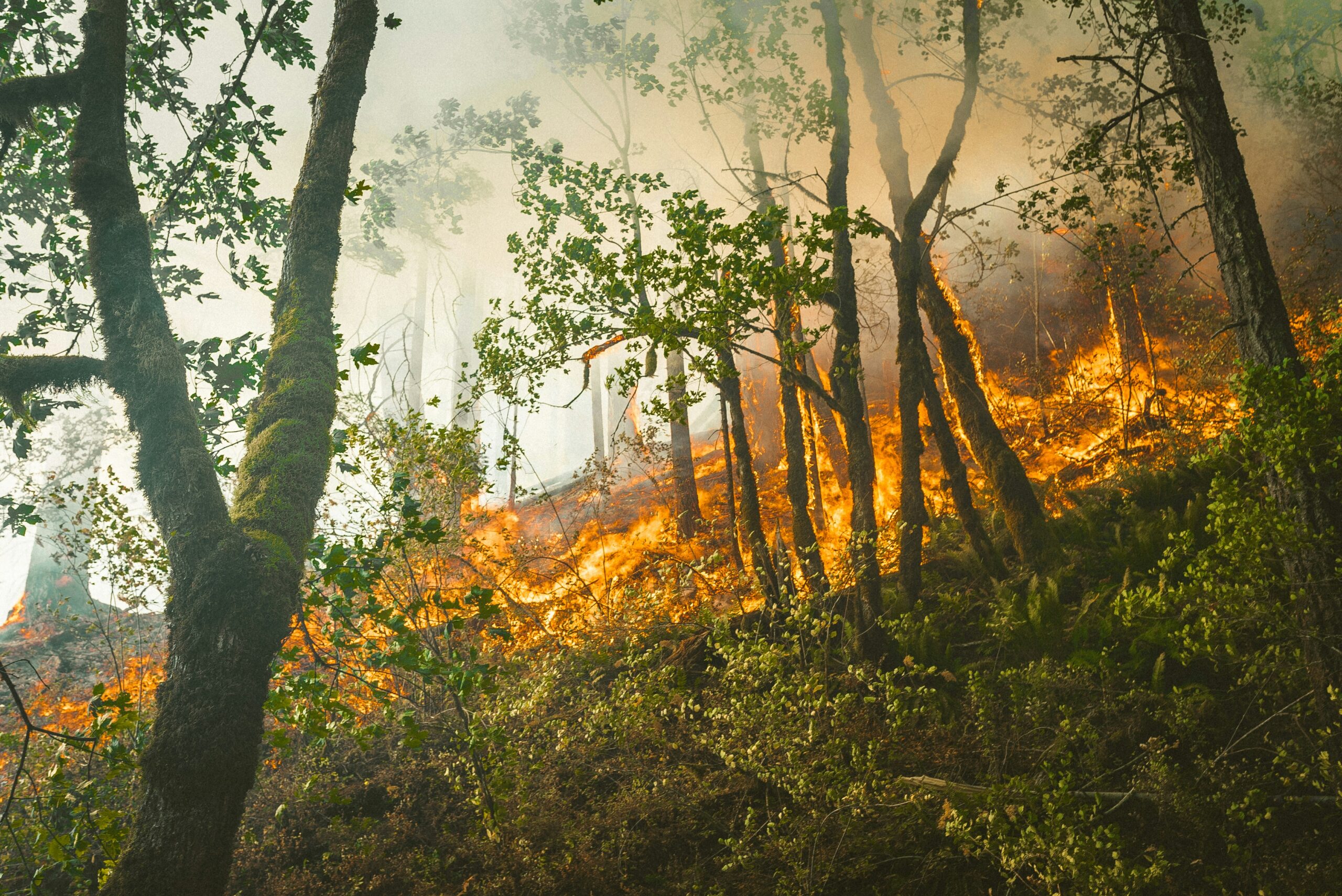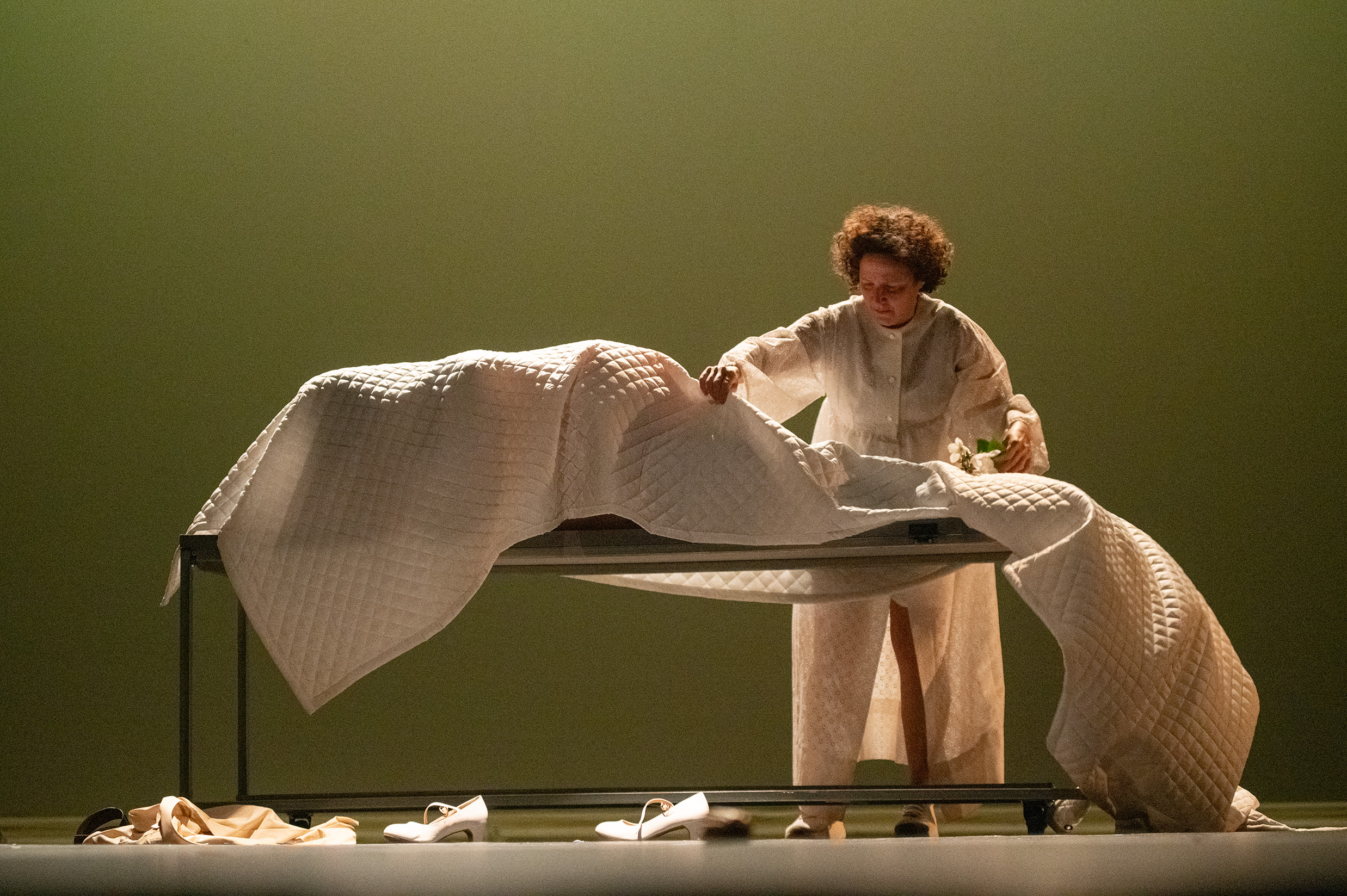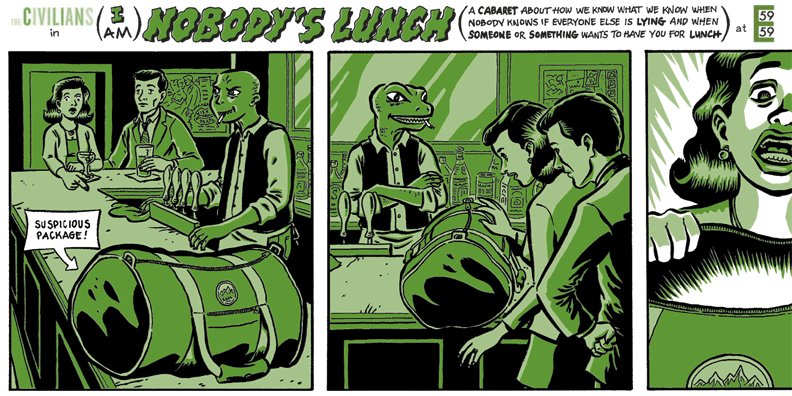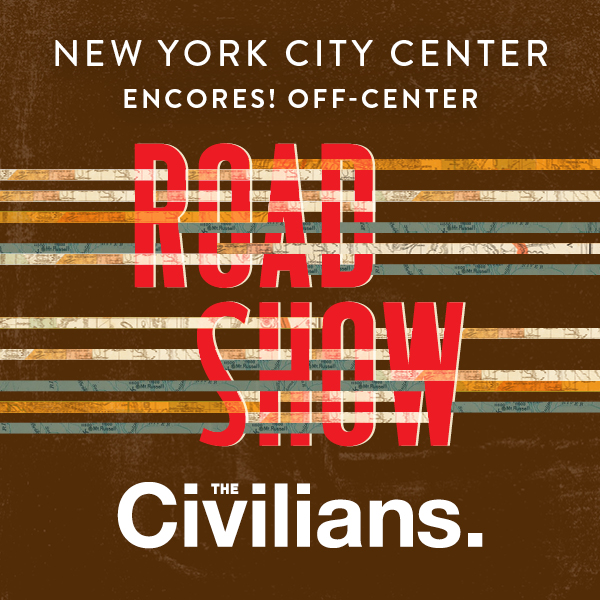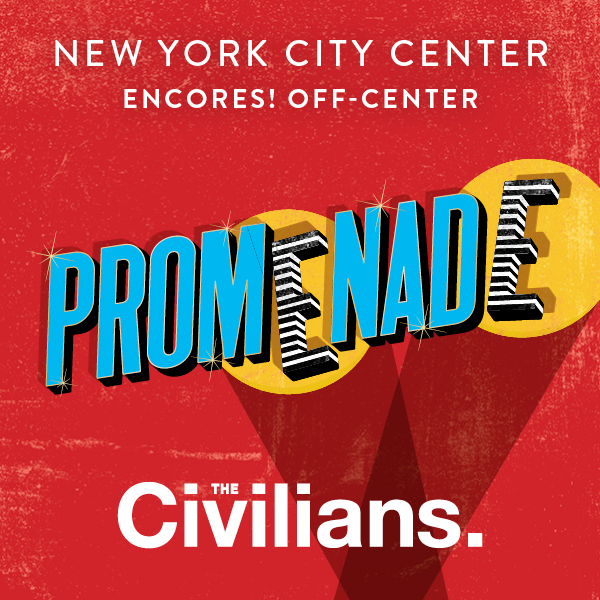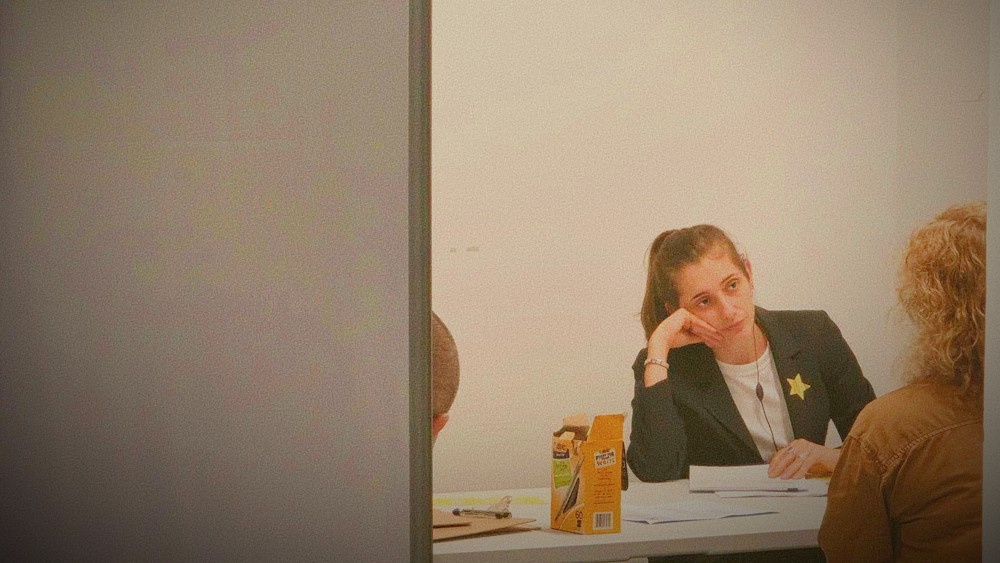
There is a photograph from the spring 2024 college student Gaza solidarity encampment that I will never forget– a canvas with the words “Liberated Zone” hand-painted in red capital letters pinned on the exterior of a blue and white camping tent. From sidewalks to pop tents, I saw variations of the “Liberated Zone” signage in student encampments throughout the country. The image from Columbia University (upper left-hand corner) became the starting point for my R&D project, 2024, Spring, an investigative theatre piece–co-written with Joseph Shahadi–about the City College of New York encampment and subsequent police raid.
“Liberated Zone” is a nod to the 1968 student uprisings, where students protesting the Vietnam War at Columbia University dropped banners bearing the phrase. Drawing from this lineage, student activists protesting the genocide in Gaza have reimagined their Liberated Zone not only as a protest space but as an experiment in radical self-determination. Community Movement Builders, an Atlanta-based organization whose mission is “to bring power to Black communities by challenging existing institutions and creating new ones that our people control,” defines Liberated Zones as “Territories where the masses (the community of people who live in and around a specific area) are in near-complete control over their political and socio-economic destinies because they control the institutions in a specific region, city, town or state.” I am familiar with liberated zone theory from my work as an organizer, and I have always been interested in how communities enact self-determination under oppressive regimes. In the case of the Gaza Solidarity encampments, I was moved by how students put the theory into practice, creating free kitchens, libraries, teach-ins, and social justice programming for their respective communities. The convergence of lived experience, theory, practice, and the misrepresentations of the encampments in legacy media drew me in as a documentarian.

Dreaming and Creating Change
Before the 2024 spring student encampments, I covered anti-war and Gaza solidarity protests as a freelance photojournalist. Many of my assignments explored cultural resistance – looking at the role of artists, particularly theatre makers, and art within these protests inspired by Artists on the Frontline and The Freedom Theatre in Jenin, Palestine, who believe that theatre plays a critical role in resistance and liberation. While this was generally considered a “hard sell” in some of the more mainstream media and theatre publications, the concept of theatre as a tool for prefigurative world-building has been a part of my creative work and process for years. I often take inspiration from my colleagues in Palestine.
The Freedom Theatre writes, “Through play, we can deconstruct an oppressive reality and make it comprehensible, which is the first step towards changing it. Just as we cannot imagine more colours than what our eyes have seen, we cannot imagine a reality beyond our own experiences and frames of reference. Then, we can dream and create change together.” Similarly, when the student encampments were erected, I witnessed many conversations about imagination, liberation, and creating the world we want to live in, organized by students. I spent days at various schools in Manhattan, in fellowship with activists, participating in programming, and making images for multiple media outlets, while also critically engaging with the way mainstream media was covering or, in this case, not covering significant elements of the encampments.

Weaving the Tapestry
Our play, 2024, Spring, is a tapestry of stories, memories, and experiences collected from activists, students, faculty, and community members at the CCNY (City College of New York) encampment and the subsequent story of the NYPD raid on April 30th, 2024, when 173 students were arrested. The CCNY encampment was unique because it brought together students, faculty, and staff from each of the 25 campuses in the City University of New York (CUNY) system, the largest public university system in the United States.

One of the reasons we chose to highlight this encampment was due to the lack of media coverage. The NYPD raid on the CUNY encampment occurred on the same night as Columbia’s raid. Many of the videos of cops attacking protestors and student arrests were from the CUNY campus, but were credited as Columbia on CNN and other cable news networks. Notably absent from newspaper headlines the following morning was mention of the 173 students arrested – more than any from Columbia or Barnard that night.
As a documentarian working across creative disciplines, I see documentary theatre uniquely positioned to uncover buried histories and reveal multiple truths. Within our development process, we are interested in what my collaborator Joseph Shahadi calls “dancing with the archive,” creating an active process for (re-) discovery, interaction, exploration, and transformation through and with testimonies, art, social media, news segments, and about the encampments for artists and audiences. Our methodology for developing nonfiction theatre work blends still and moving images, found text, and physical movement. We believe a multi-disciplinary creative process provides unique layers to storytelling and helps to highlight the complexity of the issues we address. Each documentary theatre project begins with a question or provocation. In the case of 2024, Spring, one of the questions we ask ourselves is, “What do student movements look like now – and how do we bear witness to it?” We draw influences from the documentary theatre and embodied work of Anna Deavere Smith, The Civilians, Tectonic Theatre Project, as well as historic inspiration from Living Newspapers and the Federal Theatre Project.
Living in the Zone
Building a “Liberated Zone” has also become a guiding principle and praxis within our own artmaking, deeply informing the process and approach to making this play. A “Liberated Zone” is a theoretical framework and a lived experience that we want to see represented in this project. We have worked closely with community members to share their experiences while experimenting with various collaborative storytelling techniques.

.

At this moment, when our country’s leaders are actively rewriting and erasing history, we are interested in creating a theatre to both witness and participate in archiving the memory of those on the front lines of social movements. We have watched elected officials and legacy media cherry-pick facts and co-opt narratives to maintain its control over public perception. In response, we believe in the power and potential of documentary theatre as both a process and platform to share this story and amplify the collective voice while safeguarding the identities of those who are most at risk. 2024, Spring aims to preserve some of the experiences of the CCNY encampment and create a space where the act of remembering becomes its own form of resistance. ✦

Works Cited:
Community Movement Builders. “Our Mission and Values.” Accessed March 30, 2025, https://communitymovementbuilders.org/our-mission-and-values/.
Fleischmann, Eric. “On Liberated Zones Theory.” The Anarchist Library. Accessed March 30, 2025, https://theanarchistlibrary.org/library/corri-ebert-on-liberated-zones-theory.
The Freedom Theatre. “Who We Are.” The Freedom Theatre. Accessed March 31, 2025. https://thefreedomtheatre.org/who-we-are/.
Extended Play is a project of The Civilians. To learn more about The Civilians and to access exclusive discounts to shows, visit us and join our email list at TheCivilians.org.
Author
-

Ash Marinaccio, Ph.D., is a multidisciplinary documentarian and visual storyteller working in theatre, photography, and film. For her creative work, Ash has received the Lucille Lortel Visionary Award from the League of Professional Theatre Women, a Drama League Residency, fellowships from the Mellon Foundation, NY Public Humanities, Social Practice CUNY, and National Endowment for the Humanities, been listed as one of Culture Trip’s “50 Women in Theatre You Should Know”, and is a two time TEDx Speaker. Ash is the founding artistic director of the United Nations recognized NGO Girl Be Heard and founder of Docbloc (docbloc.org) which works at the intersection of theatre and journalism to create nonfiction performance. She holds her M.A. in Performance Studies from NYU's Tisch School of the Arts and Ph.D. in Theatre and Performance from The Graduate Center, CUNY. Learn more: ashmarinaccio.com/Instagram @ashmarinaccio
View all posts


